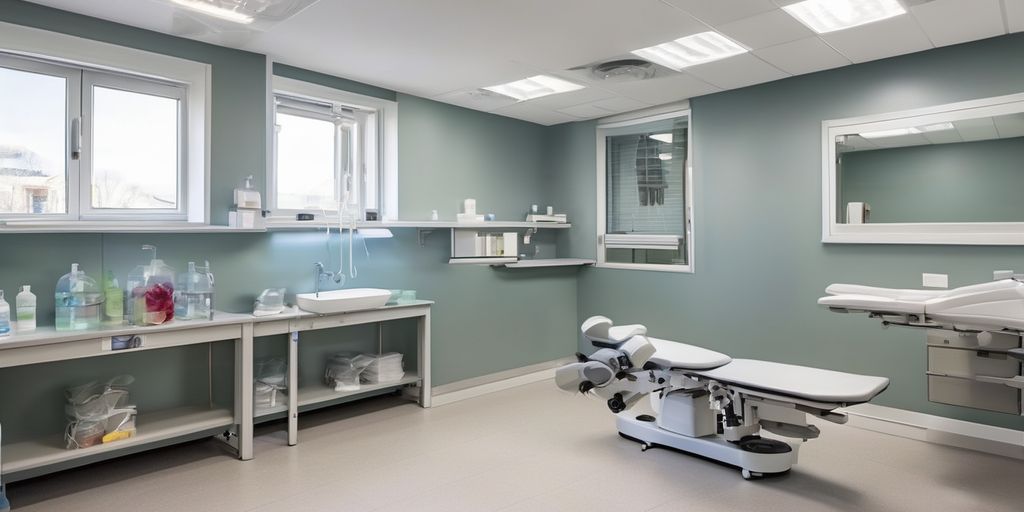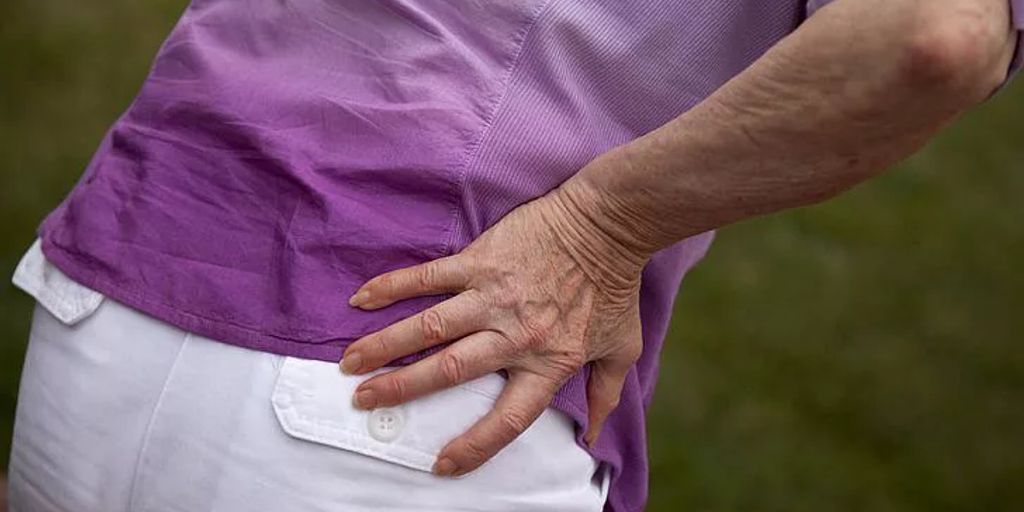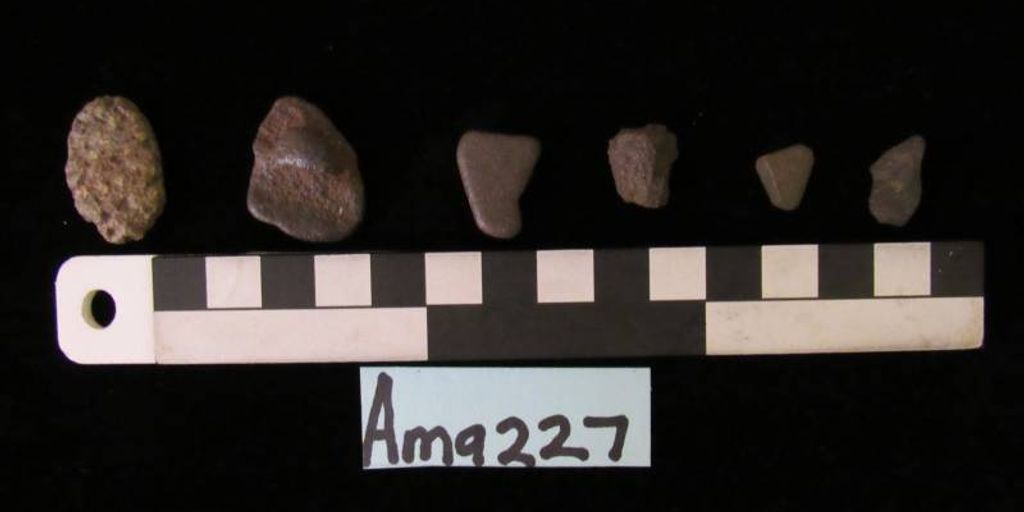
Joint replacement surgeries, particularly for the hip and knee, have transformed the lives of millions by restoring mobility and reducing pain. These procedures, often necessitated by conditions such as arthritis or injury, involve replacing the damaged joint with a prosthetic joint. This guide delves into the various surgical approaches, preparatory and rehabilitative care, alternative treatments, and potential complications associated with hip and knee replacements.
Key Takeaways
- Understanding the different surgical approaches for hip replacement can help in making informed decisions about the procedure.
- Preoperative preparation and postoperative rehabilitation are crucial for a successful hip replacement surgery.
- Exploring non-surgical alternatives and being aware of potential complications can provide a comprehensive view of joint replacement options.
Surgical Approaches to Hip Joint Replacement
Posterior Approach
The posterior approach, also known as the posterolateral approach, is the most frequently performed method for hip joint replacement. It offers easy and safe access to the hip joint and can be performed with minimal assistance. This approach involves making an incision at the back of the hip, allowing the surgeon to access the joint without interfering with the abductor muscles. However, there is a slightly higher risk of posterior dislocation with this approach. Hence patients are advised not to cross their hips in the initial few weeks after surgery to allow for healing of the posterior muscles.
Anterior Approach
The anterior approach to hip joint replacement is a minimally invasive technique that involves accessing the hip joint from the front. This method allows the surgeon to work between muscle groups, which can result in less muscle damage and a quicker recovery. Patients may experience less pain and a faster return to normal activities compared to other approaches. This approach is particularly beneficial for patients who are concerned about postoperative mobility and recovery time. This approach requires the surgeon to be specially trained in this technique and the use of specialist equipment.
Anterolateral Approach
The anterolateral approach is another approach for total hip replacement though less commonly used for hip repalcement. It provides access to the hip joint and allows for the insertion of various prosthetic designs. This approach involves making an incision on the side of the hip and navigating through the muscle layers to reach the joint. The anterolateral approach is versatile and can be adapted to meet the specific needs of the patient and the type of prosthesis being used.
The choice of surgical approach depends on various factors, including the patient’s anatomy, the surgeon’s experience, and the specific requirements of the prosthesis. Each approach has its own advantages and potential risks, and the decision should be made in consultation with a qualified orthopaedic surgeon.
Types of Hip Joint Replacement
Cemented femoral stem
A cemented stem has the advantage of immediate stability and is used in older patients with poorer bone quality. The downside is the risk of cement loosening.
Uncemented femoral stem (press fit)
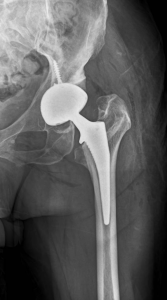
A well fitted cementless stem can potentially last longer than a cemented stem. It is usually used in younger patients with good bone quality as it requires the surgeon to impact the femoral stem into the femoral canal till there is a good press fit. The stem is also coated with materials (e.g hydroxyapatite) that allow for bony growth onto the implant for a stable fixation.
Hip Resurfacing
Hip resurfacing is a less invasive alternative to total hip replacement. This procedure involves capping the femoral head with a smooth metal covering, preserving more of the patient’s natural bone. It is particularly suitable for selected younger patients with strong bone structures. The downside is the release of metal ions from the implant which will require monitoring. It is also a stop gap to a total hip replacement.
Pre and Post hip replacement rehabilitation
Preoperative Preparation
Before undergoing hip replacement surgery, a comprehensive medical evaluation is essential. This includes a health assessment and blood tests to ensure the patient is fit for surgery. Adjustments to medications may be necessary, and patients are often advised to discontinue blood thinners. Physical preparation involves pre-surgery exercises designed to strengthen the hip and surrounding muscles.
Postoperative Rehabilitation
Postoperative care is critical for a successful recovery. Pain management is a top priority, with medications provided to control pain and prevent blood clots. Rehabilitation involves a structured programme of physical therapy to restore movement and strength to the hip. Most of the recovery will take place at home, so it is important to follow the prescribed rehabilitation plan and take proper care of oneself.
Remember, a thorough discussion with your surgeon and adhering to post-op care can significantly minimise these risks.
Complications and Risks of Joint Replacement Surgeries
Joint replacement surgeries, while generally safe, do carry certain risks and potential complications. Understanding these risks is crucial for patients considering these procedures.
Infection Risks
Infections, although rare, can occur at the wound site or deeper near the implant. Infection is a dreaded complication of hip replacement surgery and may require prolonged use of antibiotics and staged revision surgeries. Preventative measures, such as maintaining a sterile environment and administering prophylactic antibiotics, are essential to minimise this risk. Operating in a room with laminar airflow also decreases infection risk.
Nerve Damage
Nerve damage around the operated area might cause numbness or weakness. This can result from direct injury during surgery or from lengthening the hip joint more than 5cm in cases where there is shortening of the hip joint. In some cases, nerve damage may be temporary, but it can also be permanent, affecting the patient’s mobility and sensation.
Prosthetic Loosening and Wear
Prosthetic loosening is a significant concern, particularly in the long term. This occurs when the bond between the bone and the implant weakens, leading to instability and pain.
The head of the hip replacement can also wear out due to use but with highly cross linked polyethylene, these bearing surfaces can last 20-25 years. Factors contributing to loosening include wear and tear of the prosthetic materials and the patient’s activity level.
Regular follow-up and imaging studies are necessary to monitor the integrity of the implant.
Periprosthetic fractures
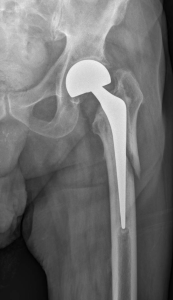
Fractures can occur around the hip implant if the patient falls on the operated hip. Depending on the fracture configuration, a customised surgical plan needs to be drawn up to address the hip implant integrity and the fracture reduction and stabilisation.
It is important for patients to have realistic expectations and to discuss potential risks thoroughly with their surgeon before undergoing joint replacement surgery.
Conclusion
In conclusion, joint replacement surgery, particularly for the hip and knee, represents a significant advancement in the field of orthopaedics and increase the quality of life for patients with a worn out hip joint. For more detailed information and to book a consultation, visit our website.
About The Author

Dr Gamaliel Tan
Orthopaedic Surgeon Specialising in Spine Surgery in Singapore
Dr Gamaliel Tan is a qualified and experienced spine specialist in Singapore with over 25 years of experience in designing and providing effective solutions for different orthopaedic problems. He specialises in spine surgery and has experience in endoscopic spine surgery and motion preservation spine procedures (artificial disc replacements).
He is a member of the Singapore Spine Society and AOSpine Society.



